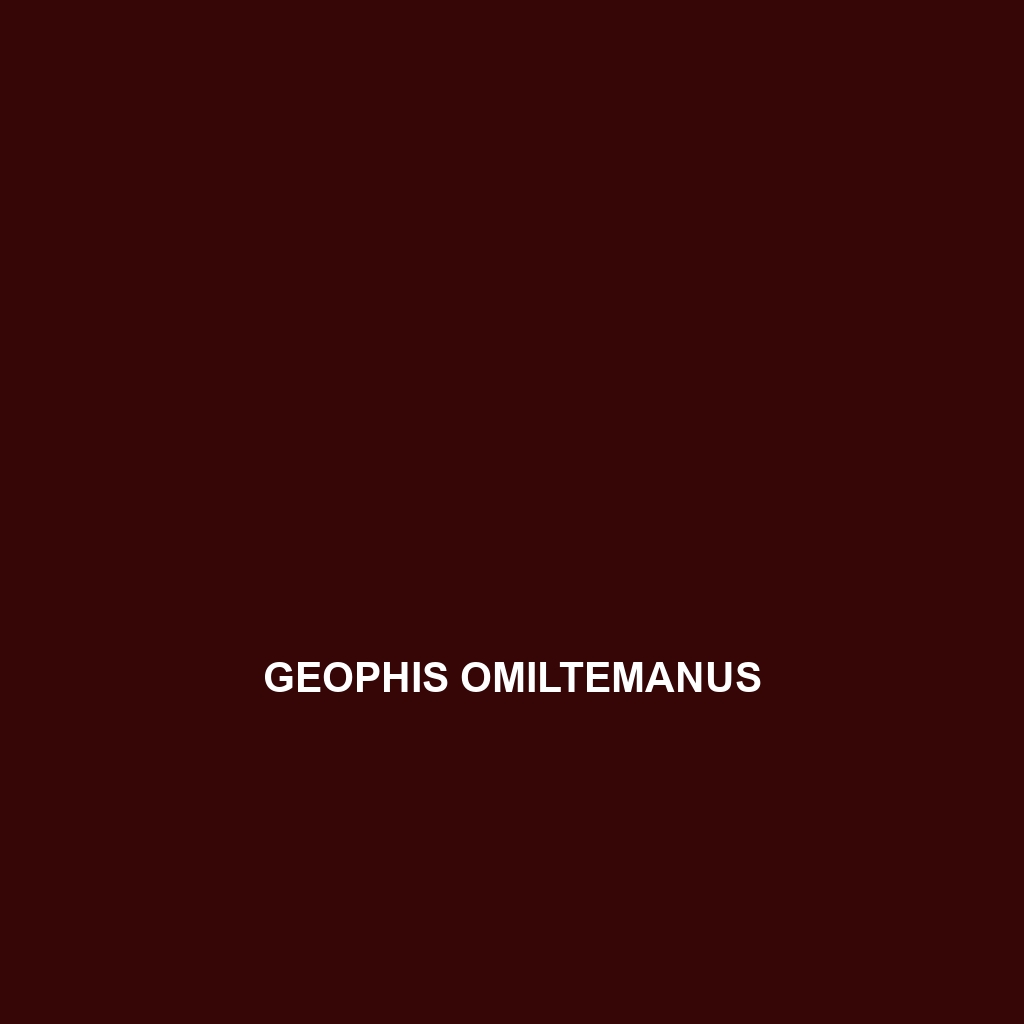Common Name
Geophis omiltemanus
Scientific Name
Geophis omiltemanus
Habitat
Geophis omiltemanus, commonly known as the Omilteman Earth Snake, primarily inhabits the moist, humid environments of Central Mexico. These snakes thrive in the mountainous regions characterized by temperate forests and cloud forests rich in biodiversity. They are often found in areas with moderate rainfall, which supports their preferred habitats filled with leaf litter and dense vegetation. The geography of their habitat ranges from the elevations of Sierra Madre del Sur to the sun-drenched valleys below, creating an ideal microenvironment for these elusive creatures. The temperature in their habitat typically varies between 15°C to 22°C, making it suitable for their survival and activity.
Physical Characteristics
Geophis omiltemanus is a medium-sized snake, averaging about 30 to 60 centimeters in length. Its body is slender and elongated, featuring smooth scales that glisten in the dappled light of the forest floor. The coloration of the Omilteman Earth Snake is particularly striking; it often displays a mix of earthy tones such as browns, grays, and faint yellows, allowing it to blend seamlessly into its environment. A unique characteristic of this species is its distinct underbelly, which is typically lighter in color, aiding in camouflage against predators. The presence of small, sharp-headed scales is notable and contributes to its overall streamlined appearance, enhancing its burrowing capabilities.
Behavior
Diet
Geophis omiltemanus primarily feeds on small invertebrates, positioning it as an insectivore within its ecosystem. Its diet mainly consists of earthworms, snails, and various insects, which are abundant in its moist, forested habitat. The snake employs a method of constriction to subdue its prey, enabling it to consume organisms that are larger than its head. This dietary specialization plays a crucial role in controlling insect populations and maintaining the balance within the local ecosystem.
Reproduction
The reproductive cycle of Geophis omiltemanus typically occurs during the rainy season, from May to August. Males engage in elaborate courtship displays to attract females. After a successful mating, females lay between 5 to 10 eggs, which they deposit in moist, sheltered environments to maintain humidity essential for development. The incubation period lasts approximately 45 to 60 days. Once hatched, the young snakes are independent and exhibit similar behaviors to adults, ensuring their rapid adaptation to the environment. Parental care is absent in this species, typical of many snake species.
Conservation Status
The current conservation status of Geophis omiltemanus is categorized as vulnerable on the IUCN Red List. The primary threats to this species include habitat loss due to deforestation and agricultural expansion, which significantly reduce their natural habitats. Conservation efforts are underway in certain protected areas, aiming to preserve the remaining populations. Strict regulations on land use and increased awareness about the importance of maintaining biodiversity in the region are vital steps towards the long-term survival of this species.
Interesting Facts
One of the most intriguing aspects of Geophis omiltemanus is its ability to detect prey through vibrations in the ground. This unique adaptation allows it to hunt effectively in its dark environments. Additionally, the snakes possess a defensive mechanism where they can release a mild musk when threatened, deterring potential predators. Another interesting fact is their role as indicators of environmental health, as their presence signifies a balanced ecosystem.
Role in Ecosystem
Geophis omiltemanus plays a vital role in its ecosystem as a predator of small invertebrates, helping to maintain population control within the soil and forest habitats. By regulating insect populations, this species contributes significantly to nutrient cycling and soil health. Furthermore, as prey for larger predators, they are an integral component of the food web, supporting biodiversity. Their presence in the ecosystem is crucial for maintaining ecological balance, showcasing their importance as a keystone species in their natural habitat.
